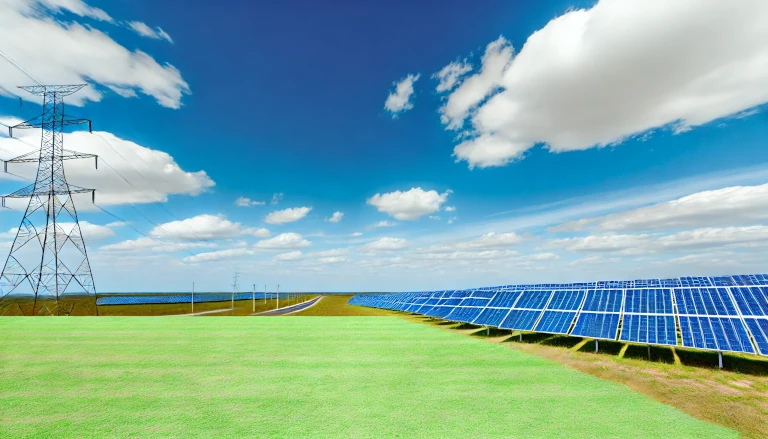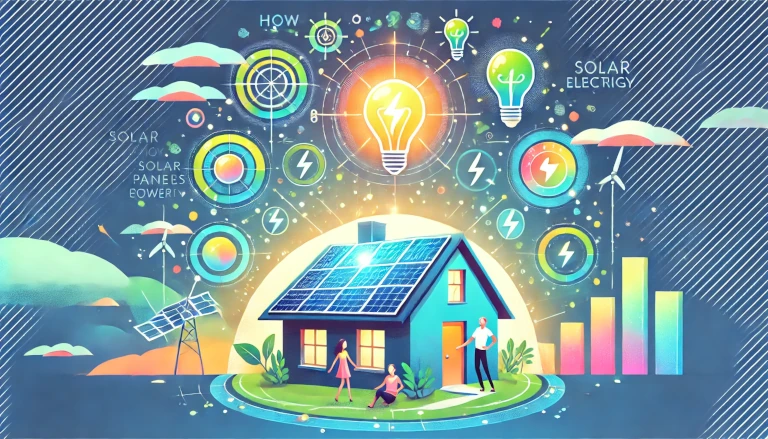A solar farm is a large-scale solar installation designed to generate electricity for sale to utilities, businesses, or communities. But what exactly is a solar farm, how does it work, and why are they becoming more popular? This guide covers everything you need to know about solar farms, including their benefits, potential costs, and tips for starting one.
What is a Solar Farm? 🤔
A solar farm, also known as a solar power station or solar park, is a large area covered with multiple solar panels that generate electricity from sunlight. These farms can span several acres and are usually located in rural or open areas where there is ample space and sunlight. Solar farms can range from small community projects to massive utility-scale installations.
How Do Solar Farms Work? 🌞🔋
Solar farms work similarly to smaller solar panel systems but on a much larger scale:
- Sunlight Capture: Large numbers of solar panels capture sunlight and convert it into direct current (DC) electricity.
- Inverter Conversion: The DC electricity is converted into alternating current (AC) using multiple inverters, making it suitable for transmission over the power grid.
- Power Transmission: The generated electricity is then sent to the grid, where it can be distributed to businesses, homes, or communities.
This setup allows solar farms to generate substantial amounts of renewable energy, often enough to power thousands of homes.
Why Invest in a Solar Farm? 🌍
There are several reasons why solar farms are an attractive investment:
- Renewable Energy Production: Solar farms provide clean energy that helps reduce reliance on fossil fuels and lowers carbon emissions.
- Economic Benefits: By selling electricity to utilities, solar farms generate revenue for landowners and investors.
- Energy Independence: Solar farms contribute to local energy supply, reducing dependence on external energy sources and improving energy security.
- Job Creation: Solar farms create jobs in construction, maintenance, and operation, benefiting local economies.
Where Are Solar Farms Typically Located? 🏞️
Solar farms are usually situated in rural or semi-rural areas with ample sunlight and flat terrain. Ideal locations are:
- Farmland: Agricultural areas with unused land can be ideal for solar farms, as they allow farmers to diversify income sources.
- Brownfield Sites: Abandoned industrial sites can be repurposed into solar farms, providing a productive use for land that might otherwise remain unused.
- Desert or Open Areas: Arid regions with little vegetation are often suitable for large-scale solar farms due to high sun exposure.
What Are the Advantages and Disadvantages of Solar Farms? 📊
Advantages:
- Scalable Energy Production: Solar farms can be built to generate from a few megawatts to hundreds, providing flexible solutions for energy needs.
- Low Operating Costs: After installation, solar farms have low maintenance costs and produce energy at a fixed cost over time.
- Environmental Benefits: Solar farms reduce greenhouse gas emissions, helping combat climate change.
Disadvantages:
- High Initial Investment: Setting up a solar farm requires a significant capital investment, often in the millions, depending on the scale.
- Land Use Concerns: Solar farms require large amounts of land, which could impact local ecosystems or reduce available farmland.
- Weather Dependent: While they perform well in sunny regions, solar farms may be less effective in areas with frequent cloud cover or lower sunlight levels.
How Much Does It Cost to Build a Solar Farm? 💸
The cost of building a solar farm can vary widely depending on location, size, and other factors. In general, a utility-scale solar farm can cost between ₹5 crore to ₹8 crore per megawatt of installed capacity in India. This includes the cost of solar panels, inverters, installation, and land.
For example, a 1-megawatt solar farm might cost around ₹6 crore, while larger projects could cost significantly more. However, there are government incentives, tax credits, and financing options that can help offset these initial costs.
What Are the Cost Benefits of Solar Farms? 🏷️
Solar farms offer several cost benefits:
- Revenue from Electricity Sales: Solar farms can generate consistent revenue by selling electricity to utility companies or through power purchase agreements (PPAs).
- Low Maintenance Costs: After the initial setup, solar farms have minimal ongoing costs, as solar panels require little maintenance.
- Potential for Government Incentives: In many regions, there are subsidies, grants, or tax incentives available for solar projects, which can significantly reduce costs.
For instance, a solar farm that sells electricity at ₹3 per kilowatt-hour could generate a steady stream of income for decades.
When is the Best Time to Start a Solar Farm? 🕒
The best time to start a solar farm depends on several factors, such as the availability of land, favorable financing options, and government policies. Generally, starting during a period of high solar incentives or when electricity demand is rising can make the investment more lucrative.
How to Start Your Own Solar Farm 📋
If you’re interested in starting a solar farm, here are some key steps:
- Conduct a Feasibility Study: Evaluate the land, sunlight availability, grid access, and potential permits required.
- Secure Financing: Explore funding options, including loans, government grants, and investor partnerships.
- Choose Equipment and Installers: Research reputable solar panel suppliers and contractors to ensure quality installation.
- Obtain Permits and Approvals: Ensure you have the necessary permits and comply with local regulations before starting construction.
- Negotiate a Power Purchase Agreement (PPA): Set up a contract to sell your generated electricity, ensuring a steady revenue stream.
Solar farms represent a viable and sustainable way to produce large amounts of clean energy. While they require significant initial investment, the long-term benefits—such as revenue from electricity sales, environmental impact reduction, and energy security—make them an attractive option. With growing demand for renewable energy, now is an excellent time to explore solar farms as a potential business venture or investment opportunity.
Discover more from Green Ecosystem - Renewable Energy, Agriculture, and Environmental Sustainability
Subscribe to get the latest posts sent to your email.


